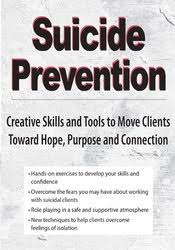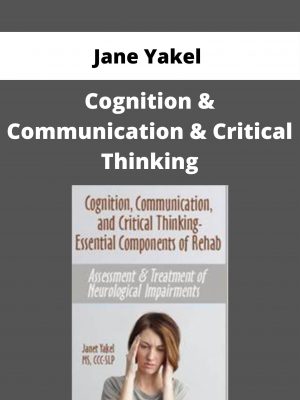Dr. Nancy K. Farber – Suicide Prevention, Creative Skills and Tools to Move Clients Toward Hope, Purpose and Connection
$200 Original price was: $200.$75Current price is: $75.
Shopping Instructions:
- DISCOUNT 15% : SHOP15
- Product Delivery: Within 1 – 12 hours after purchase.
You’ll feel transformed in the way you think about suicidal clients, and the way you think about yourself as a helping professional and human being.
Dr. Nancy K. Farber – Suicide Prevention, Creative Skills and Tools to Move Clients Toward Hope, Purpose and Connection
Meaningless and isolation – suicidal people don’t feel “a sense of belonging.” Yet common strategies tend to increase this sense of isolation by viewing suicidal individuals as people to be feared, mechanistically observed, and sometimes isolated for their own “safety.”
Watch this recording to overcome common fears about approaching the topic of suicidal ideation with clients, and learn creative and compassionate techniques to deeply, warmly, and safely guide your clients through the dark places and back into the light.
You’ll feel transformed in the way you think about suicidal clients, and the way you think about yourself as a helping professional and human being.
Discover how to decrease clients’ sense of isolation, and effectively utilize innovative techniques to restore hope. Role playing and hands-on exercises will give you the opportunity to practice new strategies in a safe, supportive environment.
Leave this recording with a new confidence and creative skills to help people move from the dark, lonely, meaningless place into a place of hope, purpose, and connection with fellow human beings!
- Articulate how suicidal thoughts are related to the universal human concerns of isolation and meaninglessness.
- Apply and practice the therapeutic factors that lead to hope and change in suicidal individuals.
- Reduce anxiety and increase self-confidence in engaging with suicidal individuals and talking about suicidal thoughts.
- Develop and practice creative, experiential approaches including the use of Gestalt techniques, music, and narrative therapy to help individuals move from despair to hopefulness.
- Implement group therapy and effectively timed professional self-disclosure as powerful tools for transforming a suicidal individual’s perceptions of self and the world.
- Examine the way you think about yourself as a professional and a human being; change the way you think about suicidal individuals.
Would you like to receive Dr. Nancy K. Farber – Suicide Prevention, Creative Skills and Tools to Move Clients Toward Hope, Purpose and Connection ?
Suicidology and the Human Condition
- The four ultimate concerns
- Suicidal thoughts are NORMAL – exploration of myths about suicidal ideation
- A sense of belonging: what decreases suicidal ideation and hopelessness?
Therapeutic Factors that Leads to Reconnection to Humanity, Hope and Self
- Universality – you’re not alone
- Catharsis – release emotions and feelings and learn from them
- Imitative behaviors – modeling what others use to cope
- Altruism – help others, help yourself
- Corrective recapitulation of family experiences – change internal voices
- Instillation of hope – I got through this; you can too
Interactive Psychodrama: Experience and Learn from a Suicidal Journey
- Practitioner as the vessel
- Come along my journey – presenter’s experience “on the other side”
- Illustration of themes of isolation and disconnectedness
- Modeling effective therapeutic factors and non-effective professional strategies
- Participant involvement in psychodrama with feedback in critical moments
Hands-on, Experiential Exercises to Develop Our Skills and Confidence
- Explore fears and experiences with suicidality
- Experiences and fears as they relate to clients
- Discussion Groups: What worked, what didn’t
Role Playing and Practicing New Techniques in a Safe Supportive Atmosphere
- Help clients re-connect to self and humanity
- Gestalt two-chair and empty chair: unresolved past conflicts
- Music as a means of human connection
- Narrative therapy techniques
- Helping professional as vessel: effective use of self-disclosure – how, when, why
- Group therapy: how, why, myths about groups
Application and In-The-Moment Practice
- Facilitated, supported role-plays
- Applied spirituality
- Use creativity and intuition
Related products
NLP & Hypnosis
NLP & Hypnosis
NLP & Hypnosis
NLP & Hypnosis
NLP & Hypnosis
NLP & Hypnosis
NLP & Hypnosis
NLP & Hypnosis












